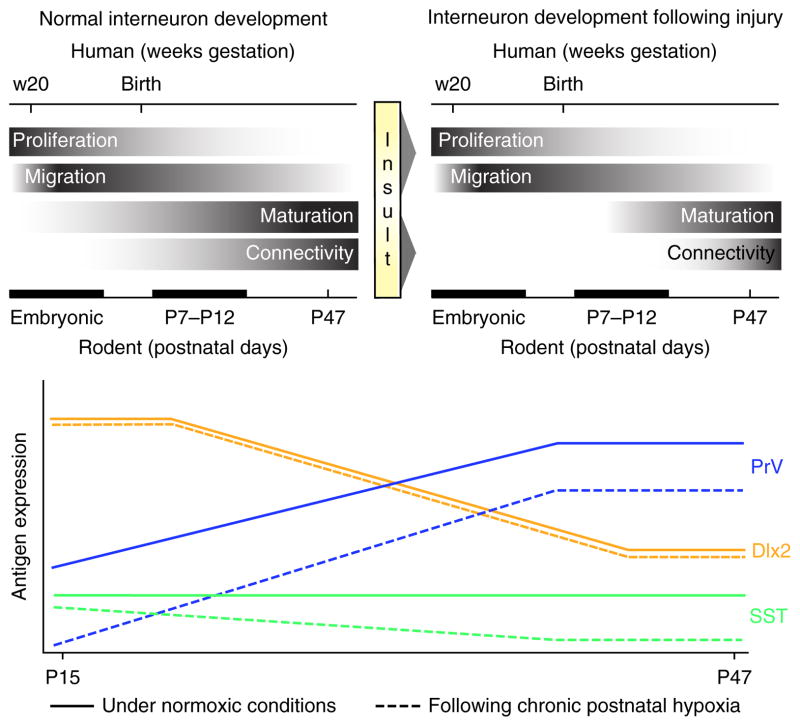Figure 1.
Chronic perinatal hypoxia causes a delay in maturation of interneurons. Top, relative time course of normal interneuron development (left) in the brains of both humans and rodents. Exposure to hypoxic injury (right) during the early postnatal period does not affect interneuron proliferation or migration but induces a delay of interneuron maturation and connectivity. Bottom, developmental pattern of interneuron antigen expression for parvalbumin (PrV), somatostatin (SST) and distal-less homeobox 2 (Dlx2) both under normal conditions (solid lines) and following hypoxic injury (dashed lines). Immature interneuron markers such as Dlx2 are unaffected by injury at this stage of development, but proteins upregulated with maturation such as PrV are vulnerable and show long-lasting perturbations in expression levels. For more details, see ref. 20.

